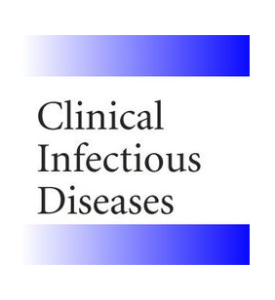 “Cannabis has been used to relieve the symptoms of disease for thousands of years. However, social and political biases have limited effective interrogation of the potential benefits of cannabis and polarised public opinion.
“Cannabis has been used to relieve the symptoms of disease for thousands of years. However, social and political biases have limited effective interrogation of the potential benefits of cannabis and polarised public opinion.
Evidence is emerging for the therapeutic benefits of cannabis in the treatment of neurological and neurodegenerative diseases, with potential efficacy as an analgesic and antiemetic for the management of cancer-related pain and treatment-related nausea and vomiting, respectively.
An increasing number of preclinical studies have established that ∆9-THC can inhibit the growth and proliferation of cancerous cells through the modulation of cannabinoid receptors (CB1R and CB2R), but clinical confirmation remains lacking.
In parallel, the anti-cancer properties of non-THC cannabinoids, such as cannabidiol (CBD), are linked to the modulation of non-CB1R/CB2R G-protein-coupled receptors, neurotransmitter receptors, and ligand-regulated transcription factors, which together modulate oncogenic signalling and redox homeostasis.
Additional evidence has also demonstrated the anti-inflammatory properties of cannabinoids, and this may prove relevant in the context of peritumoural oedema and the tumour immune microenvironment. This review aims to document the emerging mechanisms of anti-cancer actions of non-THC cannabinoids.”

 “Cannabis use in the management of musculoskeletal diseases has gained advocacy since several states have legalized its recreational use.
“Cannabis use in the management of musculoskeletal diseases has gained advocacy since several states have legalized its recreational use.
 “The endocannabinoid system (ECS) is one of the most crucial systems in the human organism, exhibiting multi-purpose regulatory character. It is engaged in a vast array of physiological processes, including nociception, mood regulation, cognitive functions, neurogenesis and neuroprotection, appetite, lipid metabolism, as well as cell growth and proliferation. Thus, ECS proteins, including
“The endocannabinoid system (ECS) is one of the most crucial systems in the human organism, exhibiting multi-purpose regulatory character. It is engaged in a vast array of physiological processes, including nociception, mood regulation, cognitive functions, neurogenesis and neuroprotection, appetite, lipid metabolism, as well as cell growth and proliferation. Thus, ECS proteins, including  “Dravet syndrome is a severe, genetic form of paediatric epilepsy associated with premature mortality and co-morbidities such as anxiety, depression, autism, motor dysfunction and memory deficits.
“Dravet syndrome is a severe, genetic form of paediatric epilepsy associated with premature mortality and co-morbidities such as anxiety, depression, autism, motor dysfunction and memory deficits.  “Advances in the development of drugs with novel mechanisms of action have not been sufficient to significantly reduce the percentage of patients presenting drug-resistant epilepsy. This lack of satisfactory clinical results has led to the search for more effective treatment alternatives with new mechanisms of action.
“Advances in the development of drugs with novel mechanisms of action have not been sufficient to significantly reduce the percentage of patients presenting drug-resistant epilepsy. This lack of satisfactory clinical results has led to the search for more effective treatment alternatives with new mechanisms of action.
 “Post-traumatic stress disorder (PTSD) is a complex disorder that involves dysregulation of multiple neurobiological systems. The traumatic stressor plays a causal role in producing psychological dysfunction and the pattern of findings suggests that the hypothalamic-pituitary-adrenal (HPA) axis, which is instrumental for stress adaptation, is critically dysfunctional in PTSD. Given the lack of understanding of the basic mechanisms and underlying pathways that cause the disorder and its heterogeneity, PTSD poses challenges for treatment.
“Post-traumatic stress disorder (PTSD) is a complex disorder that involves dysregulation of multiple neurobiological systems. The traumatic stressor plays a causal role in producing psychological dysfunction and the pattern of findings suggests that the hypothalamic-pituitary-adrenal (HPA) axis, which is instrumental for stress adaptation, is critically dysfunctional in PTSD. Given the lack of understanding of the basic mechanisms and underlying pathways that cause the disorder and its heterogeneity, PTSD poses challenges for treatment. “Despite the increasing prevalence and acceptance of the medical
“Despite the increasing prevalence and acceptance of the medical  “HIV infection leads to blood-brain barrier (BBB) dysfunction that does not resolve despite viral suppression on antiretroviral therapy and is associated with adverse clinical outcomes.
“HIV infection leads to blood-brain barrier (BBB) dysfunction that does not resolve despite viral suppression on antiretroviral therapy and is associated with adverse clinical outcomes.